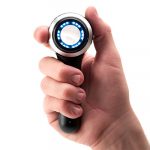Although sunshine and outdoor activity are generally good for your health and well-being, the fact is that too much exposure to sunlight can be harmful. Skin cancer is one of the most common conditions in America, with around 20 percent of the adult population suffering from a form of skin cancer at some point during their lives.
Basal cell carcinoma (BCC) accounts for many of these cases, with over four million cases diagnosed every year. Fortunately, while basal cell carcinoma is common, it’s rarely fatal. Despite that fact, it’s imperative to understand as much about this disease as possible, as early treatment can ensure it doesn’t overtly affect your body.
So, with that in mind, let’s take a closer look at BCC – what it is, how it affects the body and what to expect after a diagnosis.
What is basal cell carcinoma?
To understand this disease, you first have to know the anatomy of your skin. Basal cells are an integral part of your epidermis, helping to create new skin cells. As old cells die and fall off, new ones take their place.
A basal cell carcinoma is a form of cancer that affects basal cells specifically. Typically, BCC occurs when the DNA inside the cells is damaged by UV radiation. The most common source of this radiation is the sun. Basal cell carcinoma can result in unchecked cell growth, which can create cancerous tumors on the skin.
What are the symptoms of basal cell carcinoma?
Typically, basal cell carcinoma will begin as a new growth on the surface of the skin. These growths can vary greatly depending on the individual. In some cases, the condition can create shiny red bumps. In others, open sores or red patches may form. In rare instances, these growths can become itchy or start to bleed.
Another thing to consider when looking for warning signs of BCC is that it occurs on the parts of the body that get the most sun. Usually, the face and head are prime targets, as are arms and legs.
Overall, if you notice any of these things on sun-exposed skin, it could be a sign of basal cell carcinoma:
- Sores that won’t heal
- Shiny bumps
- Reddish or irritated area of the skin
- Scar-like tissue (white or yellowish)
- A small, pink growth with a crusted section in the middle
What are the risk factors of basal cell carcinoma?
Because this type of cancer is typically caused by UV radiation, intense exposure to sunlight without any protection (i.e., sunscreen) is the most common risk factor. Other factors can include:
- Tanning beds
- Radiation therapy
- Fair skin
- Old age
- Family history of skin cancer
What are the dangers of basal cell carcinoma?
As we mentioned, basal cell carcinoma is relatively common but rarely fatal. However, failure to identify and treat this condition early on can increase your risk of developing complications. Usually, the growths will stay in a particular area, but if they are allowed to spread, they can go deeper within the body, reaching the bone and other tissue. As the cancer deepens, it’s much harder to treat and remove.
The other primary issue with BCC is that waiting too long for treatment can allow it to come back more easily, as some of the cancerous cells may remain dormant within the skin.
How is basal cell carcinoma diagnosed?
One of the most significant challenges for those who have basal cell carcinoma is that its appearance can vary so much between patients. In many cases, a physician may misattribute a cancerous growth as some other condition, such as psoriasis or eczema.
To ensure that a diagnosis is accurate, your doctor may ask some or all of the following questions:
- How much sun exposure did you get as a child?
- Have you been using sunscreen?
- Have you experienced blistering sunburns recently?
- Do you use tanning beds regularly?
- Have you noticed bleeding spots on the skin that don’t heal quickly?
The most accurate way to diagnose BCC is for your dermatologist to take a skin sample and get it tested for cancerous cells.
Fortunately, the prognosis for BCC is usually favorable. As long as the cells haven’t spread to other parts of the body (which rarely happens), patients can assume close to a 100% recovery rate. However, keep in mind that BCC can come back after treatment, so it’s necessary to have follow-up inspections as well.
What is the treatment for basal cell carcinoma?
Usually, the best method for treating BCC is to remove all of the cancerous cells without damaging the adjacent skin. There are a few treatment options available, depending on the severity of the condition.
- Freezing – the cells are killed by freezing them, and then they are removed.
- Tumor extraction – after numbing the area, the doctor excises the growth, trying to minimize scarring as much as possible.
- Curettage and desiccation – in this case, the doctor numbs the area and uses an electric needle to remove the cancerous cells.
- Radiation therapy – this is similar to chemotherapy, except it’s far less potent and localized to the skin.
- Medication – in some cases, pills or topical creams may be able to kill the cancer cells.
How can you prevent basal cell carcinoma?
Again, exposure to sunlight is the most common trigger for this condition, so wearing extra layers and always using sunscreen is one of the best prevention methods. In addition to avoiding too much sun, you should inspect your body regularly for potential BCC growths. Also, it’s a good idea to see a dermatologist once or twice a year for a more thorough inspection.
Basal cell carcinoma is much more prevalent than you may think. Catching it early is one of the reasons why it’s not typically fatal, so be vigilant, particularly after getting lots of sun. Hats, sunscreen, and extra layers of clothes are your best defense – don’t get complacent.






